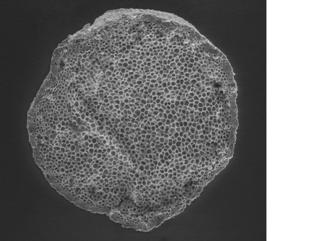
Scientists have debunked a key piece of evidence in the search for what caused 'the Big Freeze' of around 12,900 years ago, writes Sarah Day.
Geoscientist Online, 7 July 2010
The Younger Dryas, sometimes referred to as ‘the Big Freeze’, saw temperatures in the Northern Hemisphere plummet, with the mean annual temperature in the UK estimated at around 5 degrees centigrade. Whilst its cause has long been hypothesized as a comet airburst or an impact event, evidence has increasingly suggested it might lie elsewhere. Now, a new study casts doubt on one of the key pieces of evidence in support of the impact theory.
A team of scientists led by Professor Andrew C Scott of the Department of Earth Sciences at Royal Holloway, University of London, have studied carbon spherules from areas where it has been proposed that intense, impact-ignited wildfires burned, leaving behind organic residues and ‘carbon elongates’ ranging in size from one half to two millimetres.
The sediments, laid down in what are now the California Channel Islands, contain carbon spherules before, during, and a long time after then 12,900 event, and cannot be associated with it.
‘Importantly’, says Professor Scott, ‘we were able to demonstrate that these organic spheres were found commonly in both modern and ancient sediments and were not just restricted to any particular layer’.
The scientists propose that the spherules are in fact a type of fungus known as sclerotia – balls formed by fungi during times of environmental stress. Others may be fecal pellets, ‘almost certainly from termites’. Results of microscopic studies using Synchrotron Radiation X-ray Tomographic Microscopy show that the internal structures of the spherules are identical to fungal sclerotia.
‘These spherules had been commonly seen by researchers’ says Professor Scott, ‘but little attention was paid to them and so few images existed in the literature’.
With a key part of the evidence for the impact theory questioned, Professor Scott believes its time to look to other causes for the Younger Dryas episode, which saw the extinction of mammoths and is thought to be responsible for the demise of a North American Paleo-Indian people, the Clovis culture.
‘We should always have a skeptical attitude to new theories and test them thoroughly’ says Professor Scott. ‘If the evidence goes against them they should be abandoned’.
Another of the report’s authors, Professor Nicholas Pinter from the University of Southern Illinois, agrees. ‘I think we have reached that stage with the Younger Drays impact theory’.
The research is published in the latest issue of the journal Geophysical Research Letters.